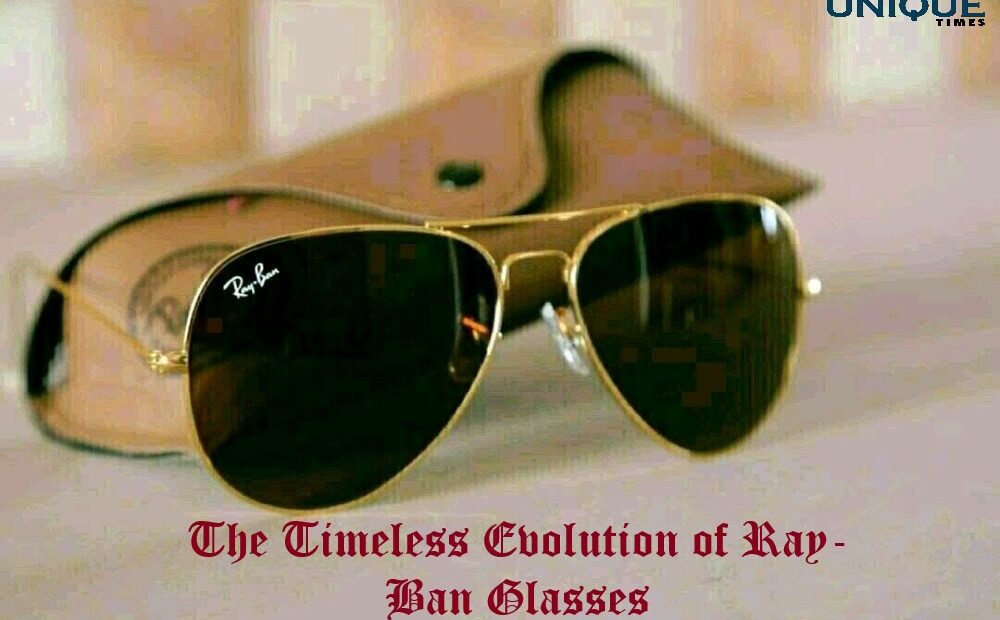A Classic American Icon: The Story of Ray-Ban Glasses

When it comes to iconic eyewear, one brand stands out above the rest: Ray-Ban. With its timeless designs and unmatched quality, Ray-Ban has become a symbol of style and sophistication. But did you know that these iconic glasses were initially designed for the U.S. Army Air Forces? In this blog, we will delve into the fascinating history of Ray-Ban glasses, exploring their origins, evolution, and lasting impact on the fashion world.
Origins: Born in the Skies
The year was 1936 when the first prototype of Ray-Ban glasses was created by Bausch & Lomb, an American company specializing in optical equipment. At the time, flying had gained immense popularity, and with it came the need for reliable eyewear for pilots. Responding to this demand, Bausch & Lomb set out to design sunglasses that would effectively address the challenges faced by aviators.
The original design, known as the “Anti-Glare,” featured a plastic frame and green-tinted mineral glass lenses. The innovative design significantly reduced glare and eye strain experienced by pilots during long flights. Consequently, these sunglasses were soon adopted by the U.S. Army Air Forces and became an essential part of a pilot’s uniform.
The Aviator Takes Flight
In 1937, Bausch & Lomb introduced the “Ray-Ban Aviator,” a variation of the original design, specifically targeting the civilian market. The Aviator’s teardrop-shaped lenses and sleek metal frame captured the imagination of the public and instantly became a fashion statement. Hollywood played a pivotal role in popularizing the Aviator, as it became a favorite among movie stars and celebrities.
During World War II, the Aviator’s popularity soared as it became synonymous with heroism and adventure. The sunglasses were widely worn by military personnel and further cemented their status as an iconic accessory.
The Wayfarer Revolution
While the Aviator enjoyed immense success, the 1950s saw the rise of another Ray-Ban design that would redefine eyewear fashion—the Wayfarer. Introduced in 1952, the Wayfarer broke away from the traditional metal frame and featured a bold, plastic design. Its distinctive trapezoidal shape appealed to a new generation, and the glasses quickly gained popularity among musicians, artists, and rebellious youth.
The Wayfarer’s cultural impact was exemplified by its appearance in the 1980 movie “The Blues Brothers,” solidifying its position as a symbol of cool and edgy style.
Pop Culture Phenomenon
Over the years, Ray-Ban glasses continued to appear in movies, music videos, and popular culture, reinforcing their status as a timeless fashion accessory. The brand’s association with iconic figures like James Dean, Audrey Hepburn, and Bob Dylan further fueled their appeal.
Modern Innovations
Ray-Ban’s commitment to innovation and quality has remained unwavering throughout the decades. In recent years, the brand has embraced new technologies, incorporating polarized and photochromic lenses, as well as lightweight and durable materials, into their designs.
Additionally, Ray-Ban has expanded its range to include various styles, catering to diverse tastes while maintaining the essence of their classic designs.
Conclusion
From their humble beginnings as essential eyewear for pilots to becoming a global fashion phenomenon, Ray-Ban glasses have come a long way. With their timeless designs, superior craftsmanship, and cultural significance, Ray-Ban has solidified its place as an American icon.
Whether you opt for the classic Aviator, the edgy Wayfarer, or any other style in the extensive collection, wearing a pair of Ray-Ban glasses not only protects your eyes but also adds a touch of sophistication to any outfit. As we look back at their storied history, we can confidently say that Ray-Ban glasses will continue to be a symbol of timeless style for generations to come.
Picture Courtesy: Google/images are subject to copyright








